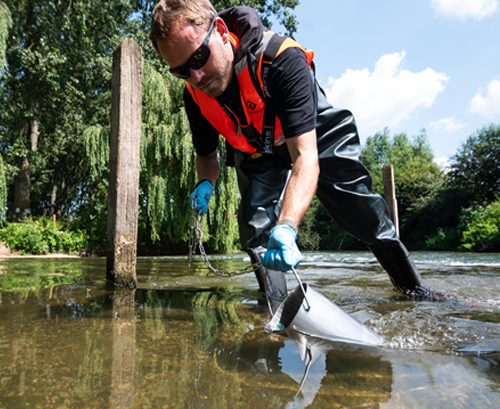Aquaculture is an essential industry that provides food security and economic benefits worldwide. The sector produces various aquatic animals, such as fish, crustaceans, and mollusks, which require high-quality water to grow and thrive. Proper monitoring and control of water quality are essential in the aquaculture industry to ensure a healthy environment for aquatic species. Among the vital water parameters that need monitoring, dissolved oxygen (DO) plays a significant role in the survival and development of aquatic animals. In this article, we discuss the importance of DO monitoring, its significance for aquaculture, and the monitoring solutions available.

Why Monitor Dissolved Oxygen in Aquaculture Water?
Dissolved oxygen is an essential parameter in aquatic environments, crucial for aquatic animals to breathe and carry out metabolic processes. In aquaculture settings, oxygen is added to water in various ways, including aeration and mechanical agitation. However, the oxygen levels can vary depending on several factors, such as temperature, salinity, feeding, and stocking density. Low levels of dissolved oxygen can result in aquatic animal stress, respiratory distress, and even death. Therefore, it is necessary to monitor DO levels regularly and maintain the optimal oxygen levels for the aquaculture species' survival and growth.
The Significance of Dissolved Oxygen Monitoring in Aquaculture Production
Aquaculture farmers need to maintain optimal DO levels for their aquatic species to avoid health issues and maximize growth potential. Monitoring DO levels can indicate potential problems before they occur, allowing farmers to prevent fish loss and poor growth performance. In addition, monitoring DO levels can help farmers avoid excessive feed waste, reduce unnecessary energy costs, and prevent harmful algae blooms. Monitoring DO levels is, therefore, crucial in maintaining a healthy and profitable aquaculture operation.
Monitoring Solutions for Dissolved Oxygen in Aquaculture
Aquaculture farmers need reliable DO monitoring solutions to ensure the best water quality for their aquatic species. There are several monitoring instruments available, including portable DO meters, handheld portable multiparameter instruments, and continuous monitors.
Portable DO Meters
Portable DO meters are handheld devices that measure DO levels in real-time. They are easy to use, affordable, and provide fast results. Portable DO meters are ideal for farmers who have small aquaculture operations with fewer tanks or ponds.
Handheld Multiparameter Instruments
Handheld portable multiparameter instruments are designed with multiple sensors that can measure various water quality parameters, including DO levels. These instruments provide accurate and reliable measurements and can store readings for future analysis. Handheld multiparameter instruments are suitable for farmers who have slightly larger aquaculture operations and require a more comprehensive monitoring solution.
Continuous Monitors
Continuous monitors are automated systems that measure DO levels and other water quality parameters continuously. They provide real-time data that can be accessed remotely, allowing farmers to monitor their aquaculture operation from anywhere at any time. Continuous monitors are ideal for farmers who have large-scale aquaculture operations and require a more comprehensive monitoring solution.
Conclusion
Dissolved oxygen monitoring is crucial in ensuring the quality of aquaculture water. It is necessary for farmers to maintain optimal DO levels for their aquatic species' survival and growth and to prevent financial losses. Monitoring solutions such as portable DO meters, handheld portable multiparameter instruments, and continuous monitors are available, providing farmers with reliable and accurate DO measurements. Investing in DO monitoring solutions can help farmers maintain a healthy and profitable aquaculture operation.
